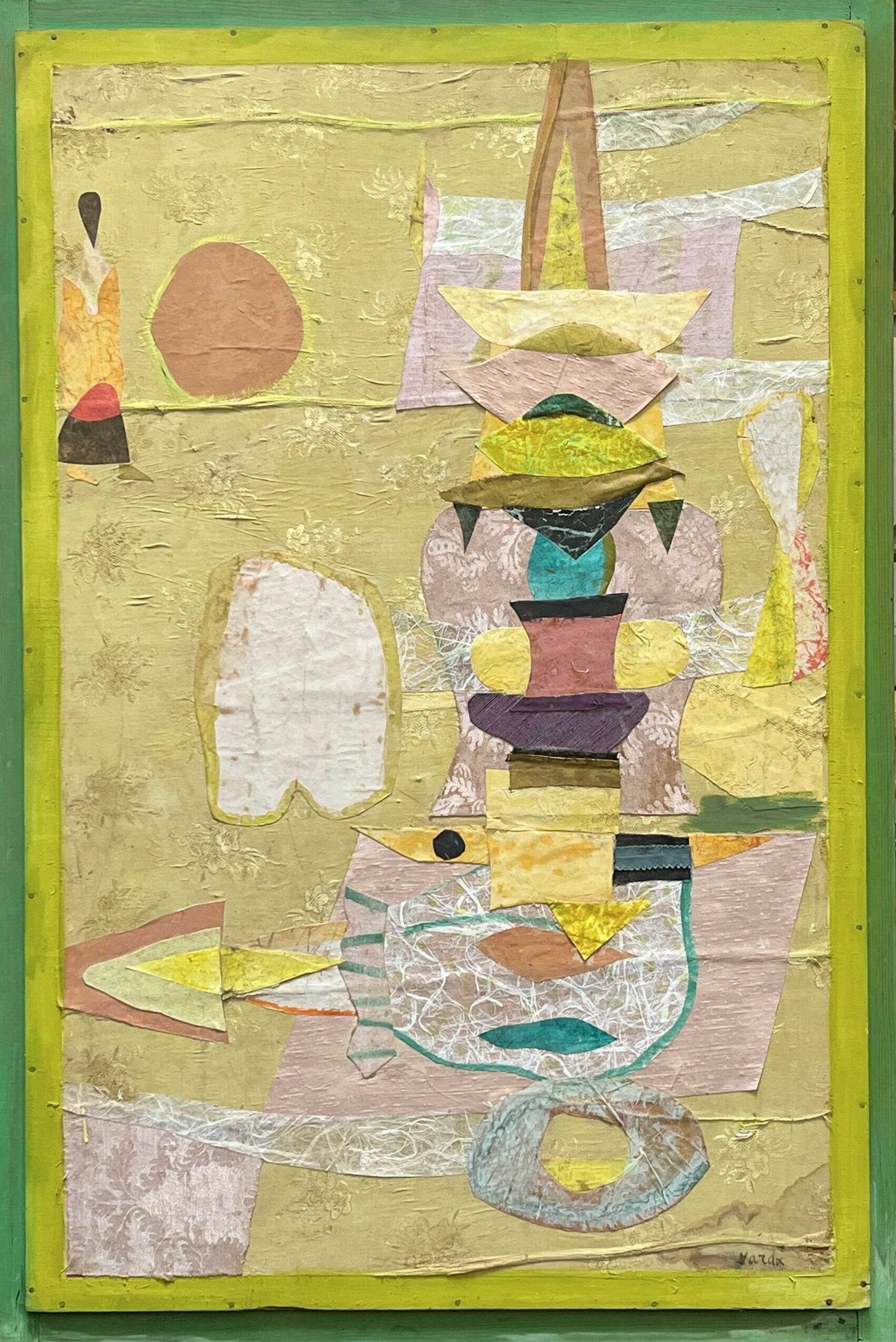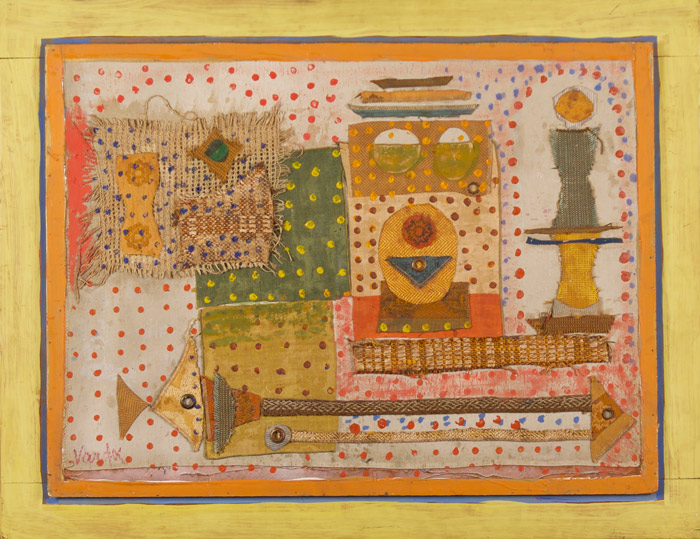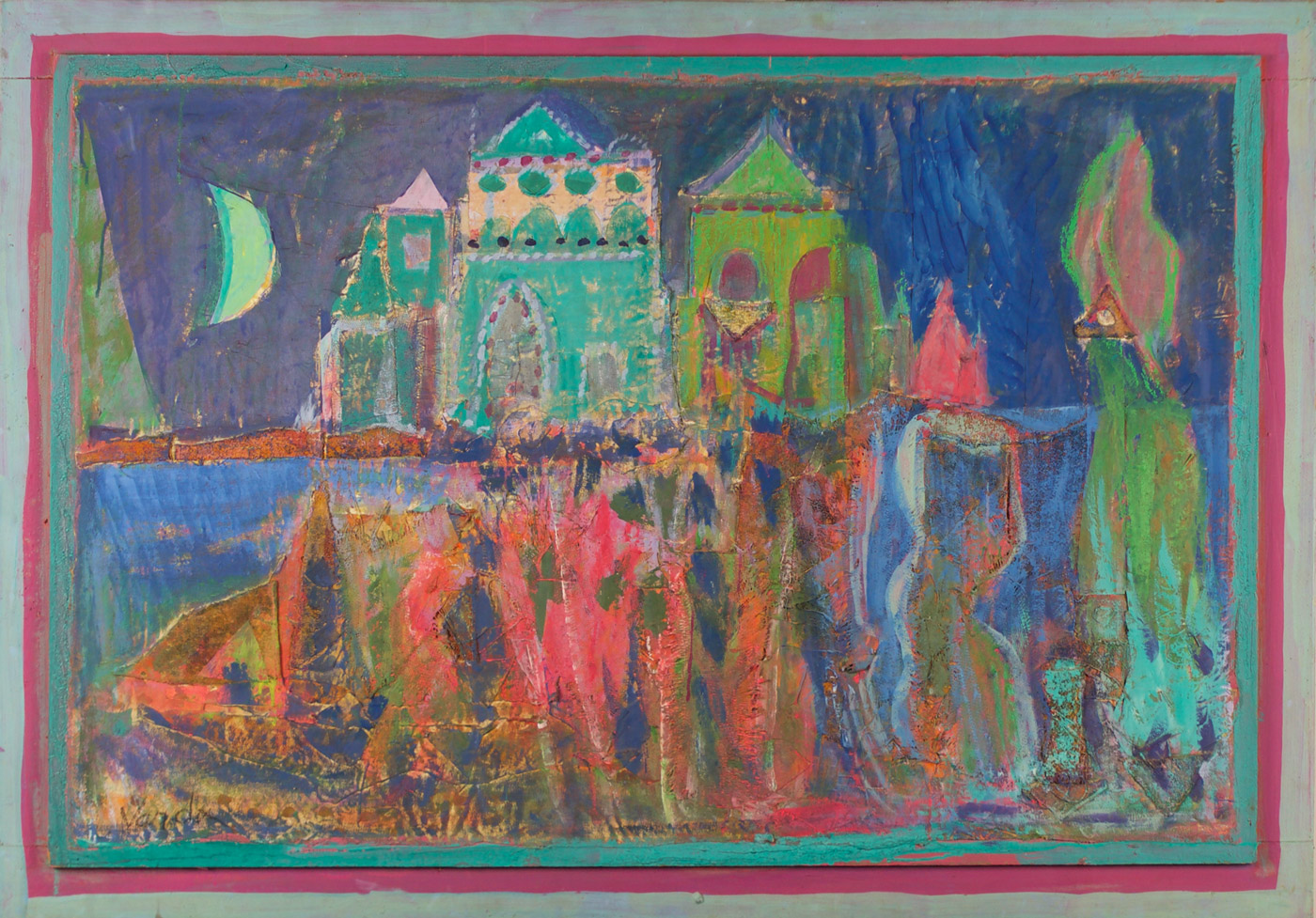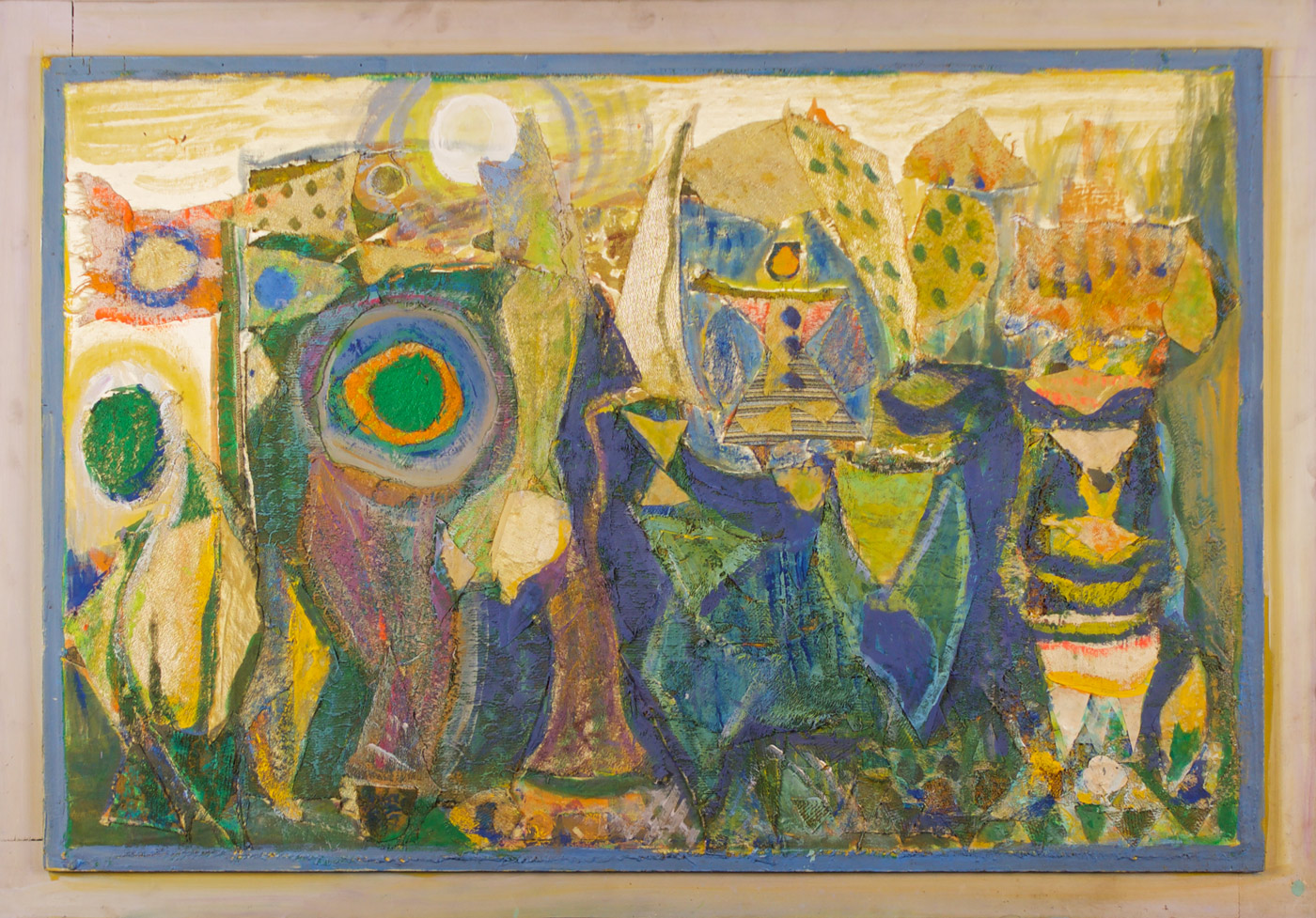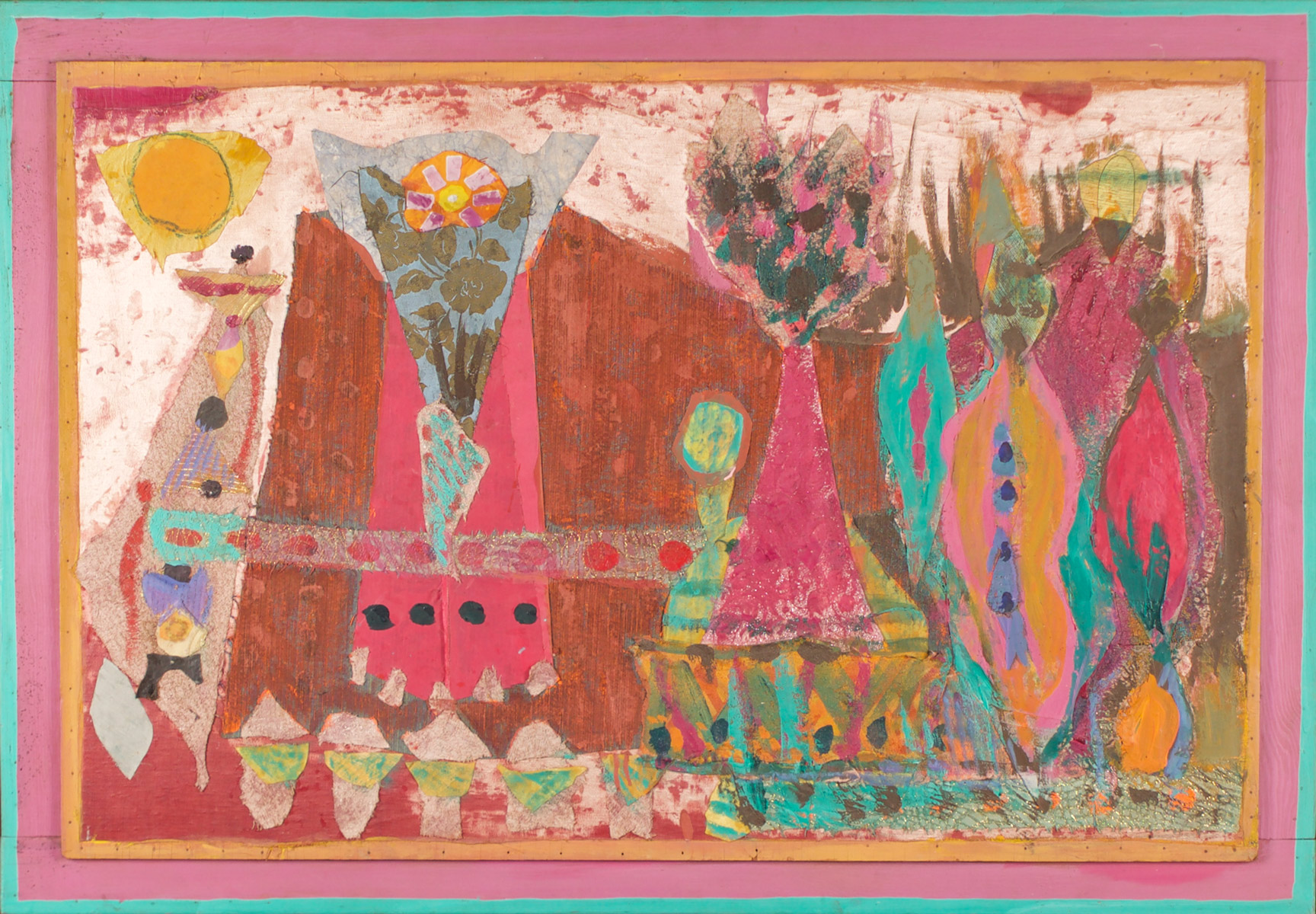JEAN VARDA Untitled No.13 (Cityscape with Castle), mid 1960’s
Mixed Media Collage on board, 28-3/4” x 36-3/4”
Provenance: The Estate of Peter Rosenwald

Varda’s constructions of paint, fabrics, and paper are feasts of color and fantasy, and reflect the artist’s deep connection to human myth-making. Varda mined history for visual and conceptual content for his work, believing that “Nothing endures unless it has first been transposed into a myth.” Varda was attracted to bright colors in his work and his life, which he felt represented vitality and good things. “The artist is the modern alchemist,” Varda said, “transmuting the refuse and scraps of civilization into splendorous visions.”
JEAN VARDA Still Life – 19, mid 1960’s
Mixed Media Collage on board, 29 x 37 inches
JEAN VARDA A Celestial City No.5, mid 1960’s
Mixed Media Collage on board, 37 x 52.5 inches
JEAN VARDA The Battle, mid 1960’s
Mixed Media Collage on board, 36.5 x 52 inches
JEAN VARDA Celestial City, 1960’s
Collage of paper and fabric on plywood, 37 x 53 inches
JEAN VARDA , Untitled (Two Women at a Table), mid 1960’s
Mixed Media Collage on board, 18-5/8 x 23-1/2 inches, 24-5/8 x 29-3/4 inches framed
Provenance: The Estate of Peter Rosenwald
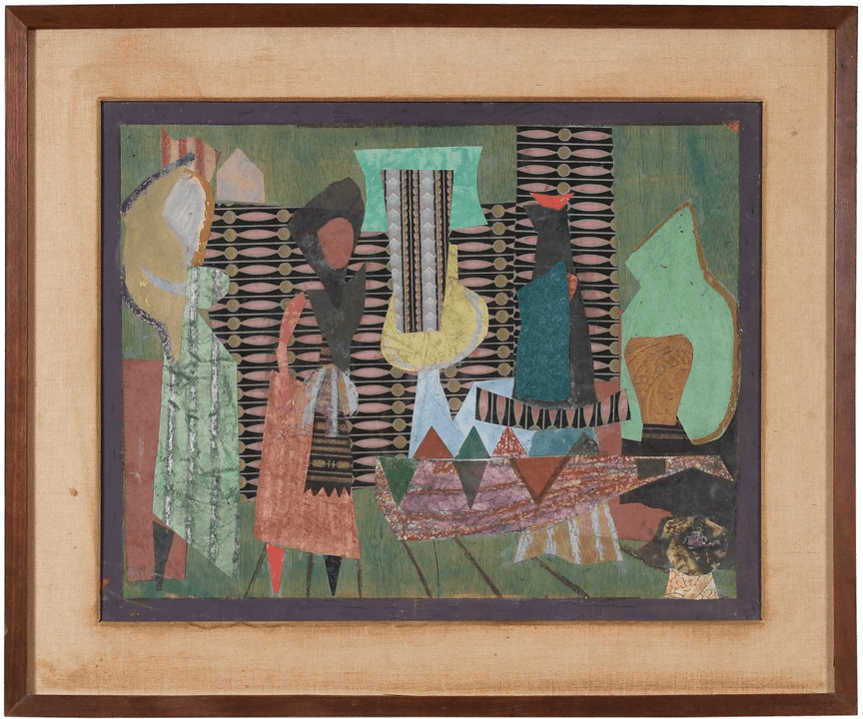
JEAN VARDA Untitled, mid 1960’s
Mixed media collage on board, 16.5 x 20 inches
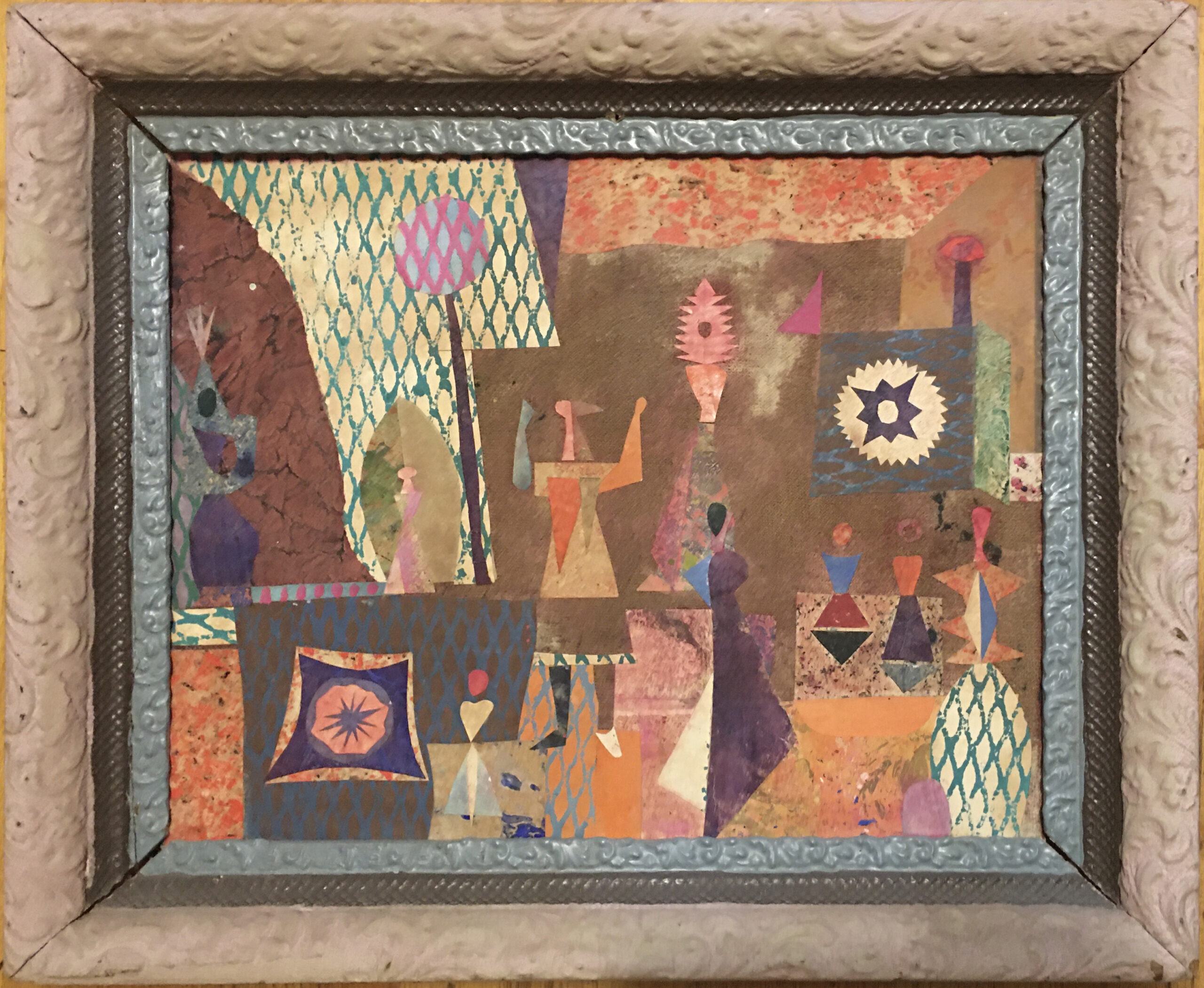
JEAN VARDA Untitled, mid 1960’s
Mixed Media Collage on board, 34 x 38 inches
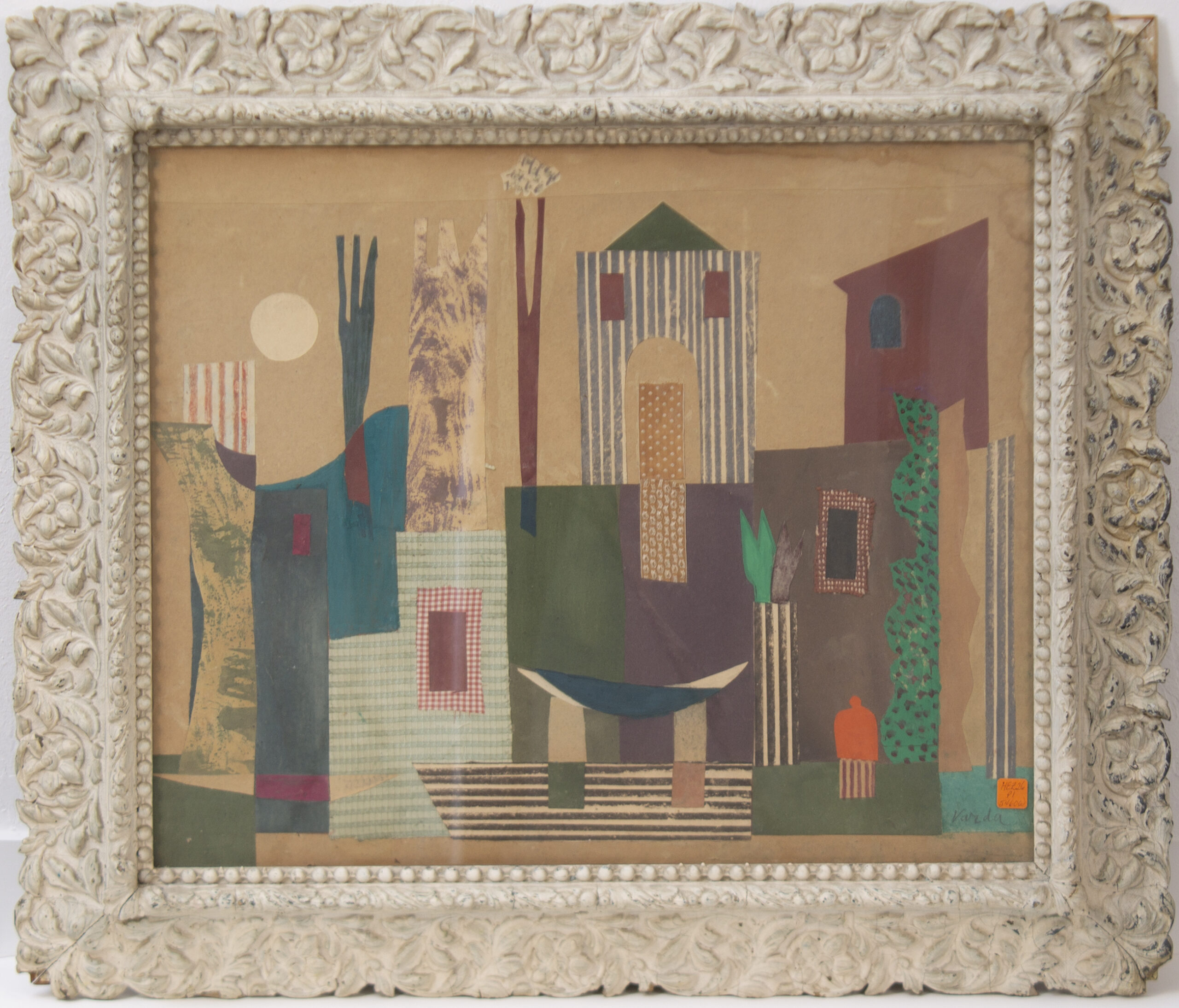
Jean Varda
Greek/French
(1893 – 1971 )
Biography
Jean Varda was a dynamic character who provided an amazing meeting ground for artists and writers when he and Gordon Onslow-Ford bought the S.S. Vallejo. They converted the boat into studios and created common gathering areas which attracted the likes of Alan Watts, Roberto Matta, Wolfgang Paalen, Henry Miller, Allen Ginsberg, Anais Nin, and countless other artists, writers, poets, and musicians.
Film by Heidi Foley: Who is Jean Varda?, A tribute to his outrageous life & sublime artwork
Jean Varda was born in Izmir, Turkey, of mixed Greek and French descent. Known as a child prodigy artist, at 19 he moved to Paris where he met artists who included, Pablo Picasso, Henri Matisse, and Georges Braque. He was especially influenced by the work of Matisse.
In 1940, Varda moved to Big Sur and persuaded his friend Henry Miller to move there as well. During the WWII years Varda’s house in Monterey became a salon for artists, writers, and other creative people. The collage, which would typically combine scraps of cloth and bits of paper with paint on a board, would remain his favored medium for the rest of his life.
In 1946 Varda was invited to teach at the prestigious Black Mountain College in North Carolina. He then returned to California and taught at the San Francisco Art Institute. In 1948 he and Gordon Onslow Ford purchased the SS Vallejo, which they remodeled into studios and living quarters, and created rooms where artists, writers, poets, and musicians gathered. The Vallejo became a salon with creative parties that attracted literary luminaries like Miller, Nin, Ginsberg, and Watts, as well as an inexhaustible list of painters and artists, notably Matta and Paalen.
Varda and the S.S. Vallejo became legendary in artistic circles in the Bay Area and beyond, due in large part to Varda’s gregarious personality, his cooking, costume parties, and makeshift sailboats on which he gave impromptu tours of the bay. In 1956, Wayne Thiebaud and Patrick Dullanty made a 16mm color film about Varda and his work, titled “Collages of Varda.”
Scenes from the life of artist Jean Varda, living and working on his Sausalito, CA vessel. (no audio)
JEAN VARDA Celestial City No. 7
Mixed Media Collage on board, 32 x 48 inches
Provenance: Collection of Mrs. Kay Ksanda, Sausalito, CA
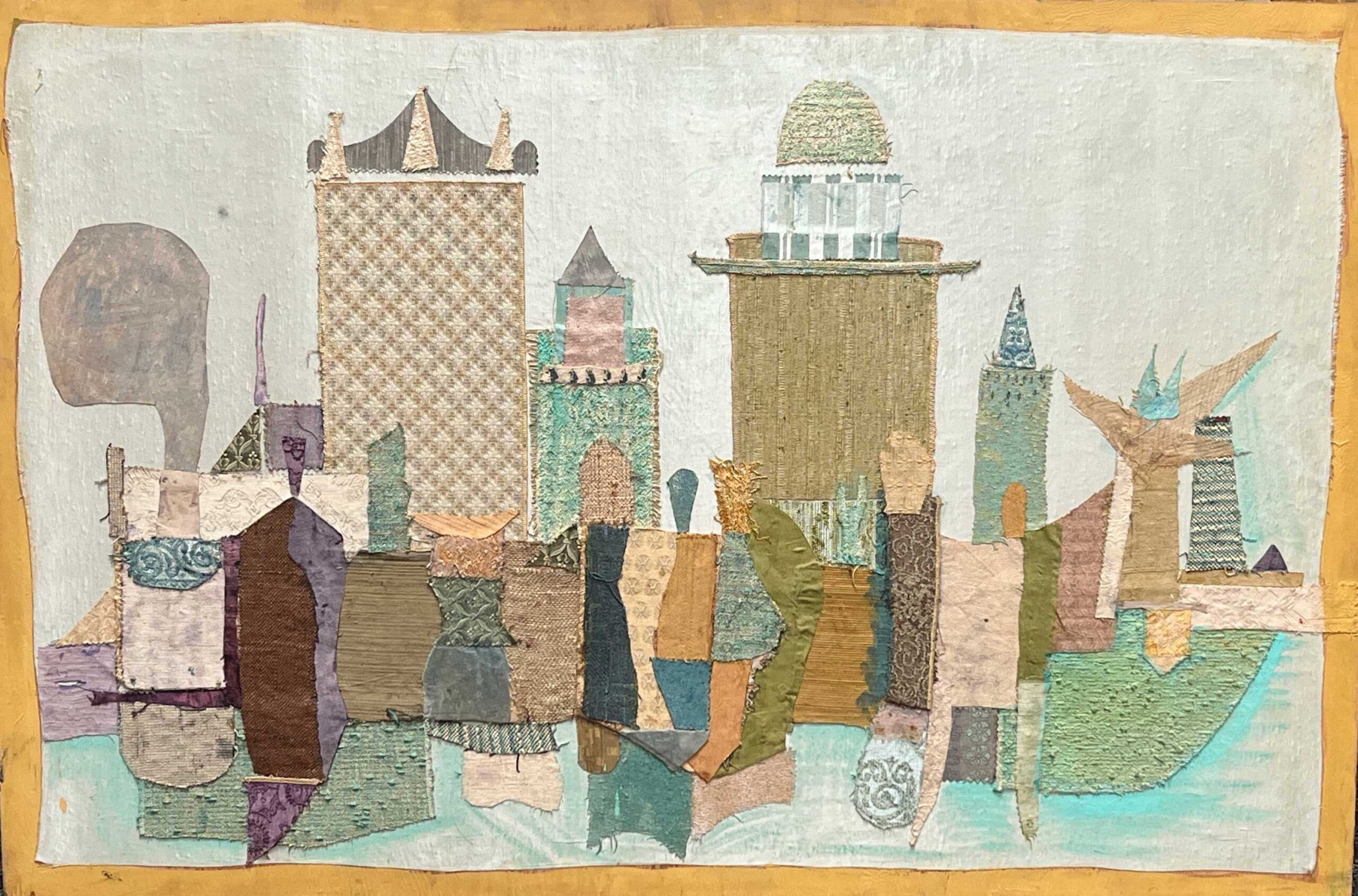
JEAN VARDA Greeting Tunisia, 1943
Mixed media collage on board, 36 x 24 inches
Museum Exhibition Label: San Francisco Museum of Art, 1943
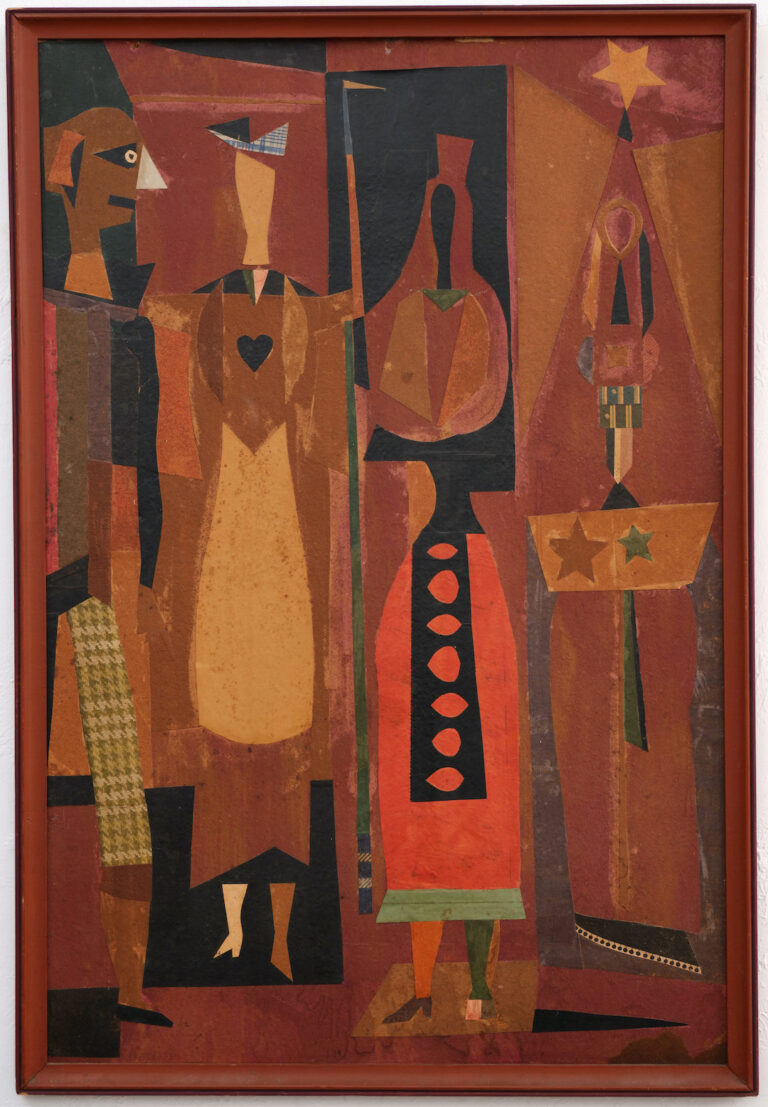
JEAN VARDA Tibetian Guru, 1943
Mixed media collage on board, 51 x 31.5 inches
Provenance: Mr. & Mrs. Ed Nash Collection, Sausalito CA
